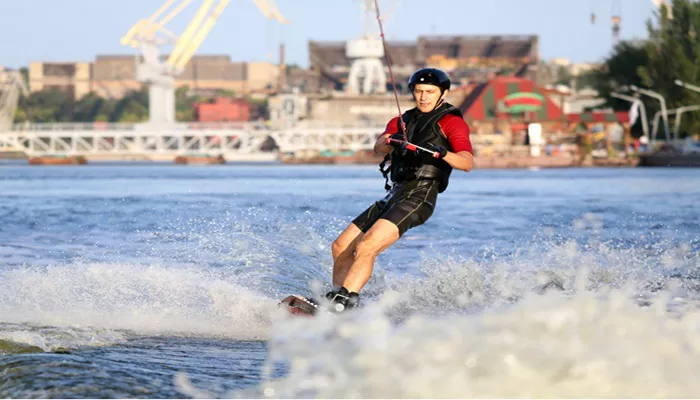Wakeboarding, an extreme water sport that combines elements of water skiing, snowboarding, and surfing, has grown significantly in popularity. For enthusiasts seeking a thrilling experience, the right speed plays a crucial role in achieving the desired performance while ensuring safety. This article delves into the factors influencing the optimal speed for wakeboarding, offering valuable insights into how to fine-tune your wakeboarding setup for the best experience.
What Affects the Speed for Wakeboarding?
Boat Speed and Rider Weight
The speed at which a wakeboarder is pulled through the water can greatly affect their performance. One key factor is the weight of the rider. Heavier riders typically require more speed to achieve the same amount of lift and speed as lighter riders. Additionally, boat speed plays a pivotal role in how the wakeboarder feels the pull, with different boat types affecting the wake size and quality.
Wakeboard Type and Design
The design and shape of the wakeboard also influence how it behaves in the water. A board with a larger surface area, for example, may need less speed to achieve lift, while smaller boards may require higher speeds for optimal performance. The rocker (curve) of the board is another consideration, affecting how smoothly the wakeboard glides through the water.
Ideal Speed Range for Wakeboarding
Standard Speed for Wakeboarding
The ideal speed for wakeboarding typically falls within the range of 18 to 24 miles per hour (29 to 39 kilometers per hour). This range ensures that the rider can achieve enough speed to carve through the water while maintaining control. However, the specific speed within this range will depend on various factors such as the rider’s weight, skill level, and the boat used.
Adjusting Speed for Rider Experience
For beginner wakeboarders, a slower speed of around 18 to 20 miles per hour (29 to 32 km/h) may be ideal. This allows the rider to practice their balance and control while still feeling the pull of the boat. Advanced riders, on the other hand, may prefer speeds closer to 22 to 24 miles per hour (35 to 39 km/h) for greater air time and higher intensity tricks.
Why Speed Matters in Wakeboarding
The Impact on Wake Formation
Wakeboarding speed directly influences the size and shape of the wake, which is essential for performing jumps and tricks. At lower speeds, the wake tends to be smaller, which may not provide enough lift for certain maneuvers. Conversely, too high a speed can create a rough wake that makes it harder for the rider to maintain control. Achieving the right balance of speed ensures that the wake is large enough for tricks while still being smooth and manageable.
Safety Concerns
Safety is always a top priority in extreme sports, and wakeboarding is no exception. Excessive speed can make it harder to control the wakeboard and increase the risk of accidents, especially for beginners. On the other hand, going too slow can lead to instability, making it difficult to stay on the board. It’s crucial to adjust the speed based on the rider’s skill level and the boat’s capabilities to ensure both a fun and safe experience.
Fine-Tuning Your Wakeboarding Setup
Adjusting Boat Settings
In addition to adjusting speed, fine-tuning the boat’s settings can significantly improve the wakeboarding experience. The weight distribution in the boat, along with the position of the rider in relation to the wake, can affect how the wakeboarder interacts with the water. Adding ballast to the boat or shifting weight can help create a larger, more defined wake. Adjusting the boat’s trim (the angle of the boat in the water) also plays a role in optimizing speed and wake size.
Using the Right Wakeboarding Equipment
Beyond speed, choosing the correct equipment is key to enhancing performance. Different wakeboards cater to various styles, and finding the right board for your needs is essential. Whether you’re a beginner looking for stability or an advanced rider chasing high-speed tricks, the board’s features, such as flex and rocker, should match your skill level and desired performance.
Factors Influencing Wakeboard Speed Adjustments
Weather Conditions
Weather conditions can have a significant impact on wakeboarding speed. Wind, water current, and temperature can all affect the way the wakeboard glides through the water. On windy days, you may need to adjust the speed slightly to compensate for the added resistance. Similarly, in choppy waters, a slower speed may be necessary to maintain stability.
Environmental Factors
The type of water in which you wakeboard also plays a role. Calm, flat water is ideal for wakeboarding at higher speeds, as it allows for a smooth and consistent ride. In contrast, wakeboarding in rough or turbulent waters requires slower speeds to maintain balance and control.
Perfecting Your Wakeboarding Technique
Body Position and Control
Your body position on the wakeboard plays a vital role in how you experience the pull from the boat. To optimize your performance, keep your knees slightly bent and your weight centered over the board. When carving or jumping, maintaining a stable body position will help you stay in control, regardless of the speed.
Learning to Adjust Speed Mid-Ride
Advanced wakeboarders often need to make adjustments to their speed mid-ride. Learning to control your movements and adjust your body position accordingly can allow you to make subtle speed changes without disrupting your flow. This skill is essential for performing advanced tricks and maneuvers, such as flips and spins.
Wakeboarding Experience: Why Speed Is Key
Speed not only influences the technical aspects of wakeboarding, but it also shapes the overall experience. A rider who masters the balance between speed, control, and wake quality is likely to enjoy a smoother, more thrilling ride. Achieving the right speed ensures you can perform at your best while maintaining safety.
Conclusion
If you’re looking for a great wakeboarding experience, whether you’re a beginner or an experienced rider, understanding the relationship between speed, equipment, and technique is essential. For more tips on optimizing your wakeboarding experience, check out the full guide at Wakeboarding Experience.

